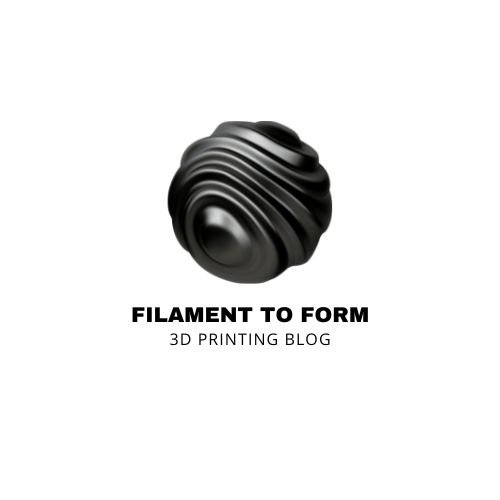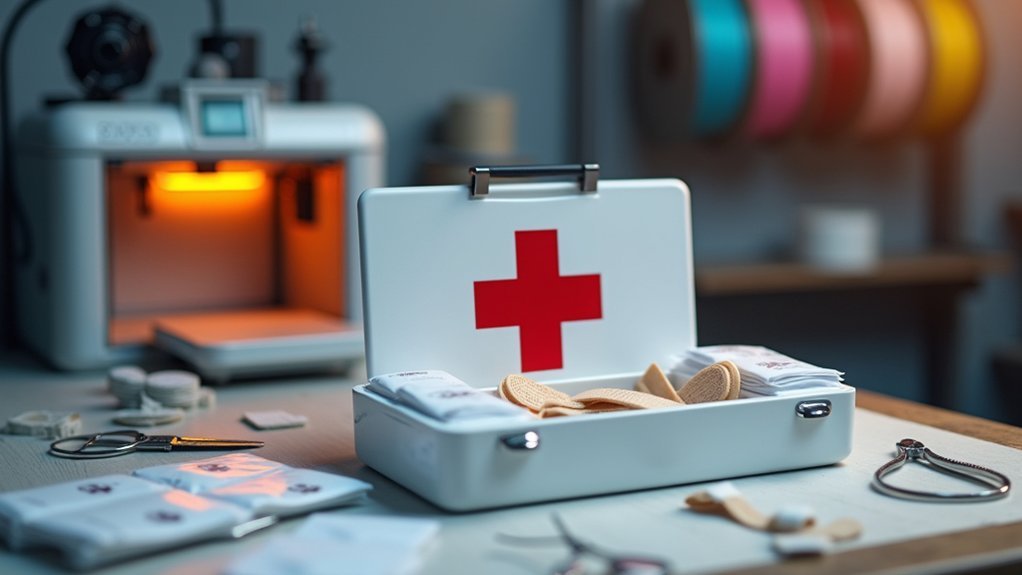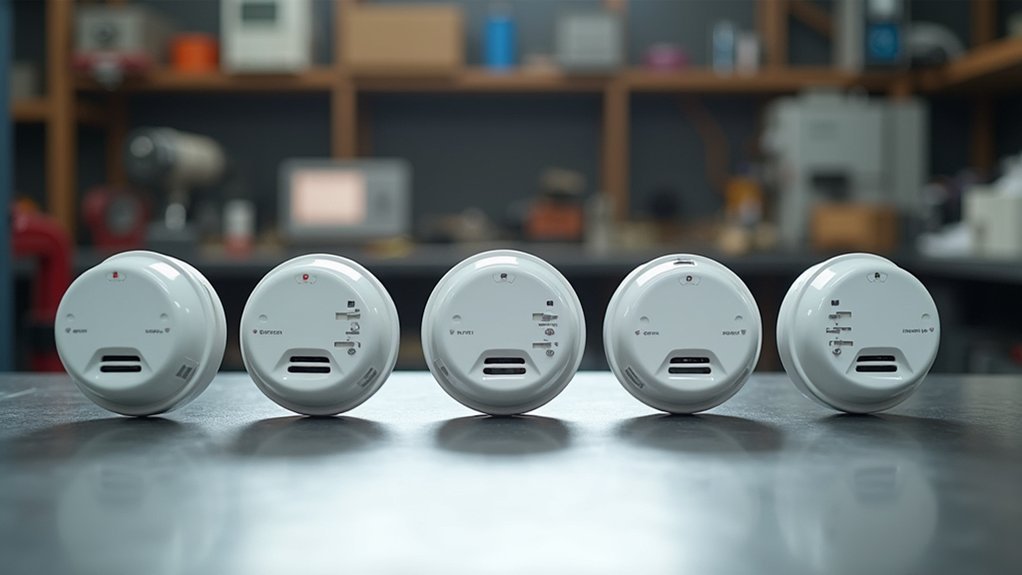You’ve probably experienced the frustration of ABS prints with visible layer lines and rough surfaces that don’t match your vision. While post-processing techniques exist, acetone vapor smoothing remains the gold standard for achieving that professional, injection-molded appearance. However, choosing the wrong chamber can lead to uneven results, safety hazards, or wasted time and materials. The right equipment makes all the difference in transforming your prints from good to exceptional.
Acetone HIGH Purity 100% for Industrial & Cosmetics Use (16 fl oz)
You’ll get uncompromising 100% purity with this acetone vapor chamber solution that’s manufactured in the USA without any additives. This high-grade acetone works perfectly for ABS smoothing projects, delivering consistent results every time you use it. The 16 fl oz bottle provides ample supply for multiple vapor chamber sessions. You won’t worry about leaks during shipping since it arrives with three-stage safety sealing protection. The manufacturer specializes in various chemical compounds, ensuring you’re getting acetone from an experienced supplier. This industrial-grade solvent maintains its effectiveness whether you’re smoothing large prints or detailed miniatures.
Best For: 3D printing enthusiasts who need high-purity acetone for ABS smoothing projects and cosmetic users seeking an effective nail polish remover.
Pros:
- 100% pure acetone with no additives, manufactured in the USA for consistent quality
- Triple-stage safety sealing prevents leaks during shipping and storage
- Versatile solvent suitable for both industrial applications and cosmetic use
Cons:
- 16 fl oz size may be excessive for occasional cosmetic users
- No safety equipment or protective gear included with purchase
- Strong chemical odor and fumes require adequate ventilation during use
Polymaker Polysher – 3D Print Surface Smoothing Device for PVB Filament
The Polymaker Polysher stands out as the safest acetone vapor chamber alternative for 3D printing enthusiasts who prioritize workplace safety without sacrificing professional results. You’ll appreciate its innovative nebulizer technology that eliminates heating requirements and vapor odors while delivering shiny, layer-free finishes on PolySmooth and PolyCast prints. The device’s sealed electronic components prevent sparks, making it considerably safer than traditional vapor-phase methods. You can operate it affordably using isopropyl alcohol or ethanol with minimal costs. At 8.8 pounds, it’s compact enough for any workspace while achieving professional-grade surface smoothing that transforms your FDM prints into polished masterpieces.
Best For: 3D printing enthusiasts who want to achieve professional, glossy surface finishes on PVB filament prints while prioritizing workplace safety over traditional acetone vapor methods.
Pros:
- Safer than vapor-phase methods with sealed electronics, no heating required, and no alcohol vapor odors during operation
- Cost-effective operation using common isopropyl alcohol or ethanol with low ongoing expenses
- Delivers professional-quality results that eliminate layer lines and create shiny, polished surfaces on PolySmooth and PolyCast prints
Cons:
- Only compatible with specific PVB filaments (PolySmooth and PolyCast), limiting material options
- Requires a separate FDM/FFF 3D printer to create the parts before post-processing
- Some users report issues with filament tangling and difficulty printing support materials
3D Printer Smoothing Kit with Temp Control Display (8pcs Soldering Iron Tips)
Professional 3D printing enthusiasts who demand precision control will find the 3D Printer Smoothing Kit with Temp Control Display invaluable for achieving flawless surface finishes. This 80W electric iron operates between 180°C-500°C with digital temperature display, ensuring stable heat management for PLA, ABS, PETG, TPU, PC, PP, and HIPS materials. You’ll appreciate the eight versatile soldering tips that screw onto the brass adapter for easy replacement and precision work. The lightweight 5.3-ounce design heats quickly and maintains consistent temperatures. Users rate it 4.4 stars, praising its reliability and effectiveness, though you’ll need an extension cord for better mobility.
Best For: Professional 3D printing enthusiasts who need precise temperature control and multiple tip options for smoothing and finishing prints across various materials including PLA, ABS, PETG, TPU, PC, PP, and HIPS.
Pros:
- Digital temperature display with wide range (180°C-500°C) provides precise control for different materials
- Eight versatile soldering tips with easy screw-on brass adapter system for quick changes
- Lightweight design (5.3 oz) with fast heating and stable temperature management
Cons:
- Short cord limits movement and may require extension cord for better mobility
- Only 17 customer ratings may not provide comprehensive feedback on long-term reliability
- At 110V/60W power requirement, may not be suitable for international use without voltage converter
PB Motor Tech 5 Gallon Vacuum Chamber Kit with 4.5 CFM Vacuum Pump
For serious makers and craftspeople who need consistent vacuum performance, PB Motor Tech’s 5 Gallon Vacuum Chamber Kit delivers professional-grade results with its powerful 4.5 CFM pump and reinforced stainless steel construction. You’ll appreciate the tempered glass lid that provides clear visibility while maintaining bulletproof durability. The chamber withstands temperatures up to 160°F, making it perfect for acetone vapor smoothing applications. Its dual rubber seals guarantee enhanced vacuum retention, while the copper motor’s aluminum alloy housing provides excellent heat dissipation. You’ll find setup straightforward, though you’ll need to purchase vacuum pump oil separately for peak performance.
Best For: Serious makers, craftspeople, and hobbyists who need professional-grade vacuum performance for wood stabilization, resin degassing, 3D printing filament preparation, and acetone vapor smoothing applications.
Pros:
- Powerful 4.5 CFM vacuum pump with reinforced aluminum alloy housing provides excellent heat dissipation and corrosion resistance
- Durable stainless steel chamber with tempered glass lid offers clear visibility while withstanding temperatures up to 160°F
- Dual rubber seals and professional construction ensure strong vacuum retention and consistent performance over time
Cons:
- Requires separate purchase of vacuum pump oil which adds to initial setup cost
- 5-gallon size may be too large for users with limited workspace or occasional use needs
- Professional-grade features may be overkill for basic hobbyist applications requiring simpler vacuum solutions
Resiners Resin Bubble Remover Airless Pro (3.2L Vacuum Chamber)
Artists and professionals working with large-scale resin projects will find their perfect match in the Resiners Resin Bubble Remover Airless Pro, a Red Dot Design Award winner that delivers 99.99% bubble removal efficiency through its innovative Quad-Pump technology. You’ll achieve crystal-clear finishes in just three minutes with its -99kPa vacuum level and 3.2L capacity handling up to 27.05 ounces per cycle. The intuitive touchscreen offers three time settings for different resin viscosities, while real-time monitoring tracks your degassing progress. Though some users report vibration-related spillage requiring cup securing, the 4.7-star rating from 140 reviews confirms its exceptional value for jewelry making, art crafts, and professional applications.
Best For: Artists and professionals working on large-scale resin projects, jewelry making, and art crafts who need efficient bubble removal for crystal-clear finishes.
Pros:
- Exceptional 99.99% bubble removal efficiency with Quad-Pump technology and stable -99kPa vacuum level
- Fast 3-minute processing time with large 3.2L capacity handling up to 27.05 ounces per cycle
- Award-winning design with intuitive touchscreen interface and real-time monitoring features
Cons:
- Vibration during operation can cause spillage, requiring users to secure cups with tape
- Higher price point compared to basic vacuum chamber models
- Takes up significant workspace due to its professional-grade size
Factors to Consider When Choosing Acetone Vapor Chambers for ABS Smoothing
When you’re selecting an acetone vapor chamber for ABS smoothing, you’ll need to evaluate several critical factors that directly impact your results and safety. The chamber’s size and capacity must match your project requirements, while essential safety features, temperature control systems, and proper ventilation protect you during operation. You should also examine the construction material quality to guarantee your investment withstands repeated acetone exposure and delivers consistent performance.
Chamber Size and Capacity
Although acetone vapor chambers come in various sizes, you’ll need to match the chamber’s dimensions to your specific printing projects. Choose a chamber large enough to accommodate your ABS parts while ensuring even acetone vapor exposure across all surfaces. A minimum internal volume of 1 to 2 gallons provides effective vapor distribution and space for multiple parts.
Consider the chamber’s height carefully – taller chambers handle larger objects but require more acetone to fill adequately. The capacity should support proper airflow for even vapor circulation, which depends on the chamber’s design.
Select a chamber that offers easy access for loading and unloading parts while maintaining a secure seal to prevent vapor escape during the smoothing process.
Safety Features Required
Safety considerations must take priority when selecting an acetone vapor chamber, as acetone’s flammable properties and toxic vapors create significant hazards without proper precautions. You’ll need sealed electronic components that prevent sparks, which could ignite vapors and cause fires. Ascertain your chamber includes proper ventilation systems to manage vapor buildup and maintain safe working conditions.
Choose chambers constructed from acetone-resistant materials to prevent corrosion, deterioration, and dangerous leaks. Look for automatic shut-off timers that prevent prolonged vapor exposure and reduce overheating risks. You should prioritize models with safety seals and leak-proof designs to prevent spills that pose health and environmental dangers. These essential safety features protect you while ensuring reliable ABS smoothing performance.
Temperature Control Systems
Beyond the safety features that protect you during operation, effective temperature control systems determine the quality of your ABS smoothing results. You’ll need precise temperature management between 50°C to 80°C to guarantee acetone vapor effectively liquefies your ABS surface without causing warping or melting.
Look for chambers with digital displays and adjustable settings that let you monitor and modify temperatures in real-time. This precision gives you consistent smoothing results across different projects and print sizes.
Advanced systems include automatic shutoff features that cut heating when temperatures exceed safe limits. This protects both your prints and the vapor chamber itself. Without proper temperature control, you’ll struggle with inconsistent finishes, damaged prints, and potentially dangerous operating conditions that compromise your entire smoothing process.
Ventilation and Filtration
Three critical ventilation components determine whether your acetone vapor chamber operates safely and effectively. First, you’ll need proper airflow systems that prevent harmful fume buildup while ensuring even acetone vapor distribution around your ABS parts. Without adequate ventilation, you’re risking poor air quality and health hazards from concentrated vapors.
Second, install reliable air filtration systems to capture harmful particles and vapors before they contaminate your workspace. These filters create a safer environment during the smoothing process.
Third, incorporate exhaust fans or ducting that direct fumes outside your workspace, minimizing inhalation risks and reducing vapor concentration. Remember to maintain these systems regularly—faulty ventilation equipment won’t protect you from acetone exposure dangers. Effective ventilation also enhances smoothing efficiency through consistent vapor circulation.
Construction Material Quality
While proper ventilation protects you from harmful fumes, the materials that construct your vapor chamber determine whether it’ll survive repeated acetone exposure and deliver consistent results. You’ll want stainless steel or reinforced glass construction since these materials resist acetone’s corrosive properties while maintaining structural integrity over time.
Don’t overlook wall thickness—thicker walls provide better stability and reduce breakage risks during regular use. Choose chambers with tempered glass lids so you can monitor your prints’ smoothing progress without opening the chamber and compromising the process.
High-quality seals are essential for maintaining vacuum pressure and preventing vapor leaks. Look for rubber or silicone gaskets specifically designed to withstand chemical exposure, ensuring your chamber maintains proper acetone vapor concentration throughout each smoothing cycle.
Acetone Vapor Distribution
Uneven acetone vapor distribution creates the most frustrating smoothing failures you’ll encounter—sections that remain rough while others become over-smoothed or even damaged. You need a chamber design that promotes proper vapor circulation, ensuring every surface receives consistent exposure to the smoothing agent.
Look for chambers with adequate volume that allows acetone vapors to disperse effectively rather than concentrating in specific areas. Larger chambers reduce saturation issues and let you process multiple prints simultaneously. Temperature control features help maintain ideal vapor activity—warmer conditions increase volatility but require careful monitoring.
Don’t overlook sealing quality. Poor seals cause rapid vapor loss, destroying concentration levels needed for effective smoothing. Check gaskets, lid mechanisms, and connection points before purchasing.
Cost Vs Performance
Although premium acetone vapor chambers command higher prices, they’ll deliver superior smoothing results that justify the investment for serious makers. Higher-end models feature better insulation and quality materials that maintain consistent temperatures, producing smoother ABS finishes in less time. You’ll find that economical options often struggle with capacity limitations and efficiency issues, leading to extended smoothing cycles and subpar surface quality.
When evaluating options, consider your specific smoothing requirements against long-term performance outcomes. Premium chambers typically offer faster processing times and more uniform vapor distribution, while budget models may require patience and compromise on results. The initial investment difference often pays for itself through improved reliability, consistent temperature control, and superior finish quality that meets professional standards.
Frequently Asked Questions
How Long Should I Expose ABS Prints to Acetone Vapor?
You should expose ABS prints to acetone vapor for 30 seconds to 5 minutes, depending on your desired smoothness level. Start with shorter exposures and gradually increase time until you achieve the surface finish you want.
What Safety Precautions Are Needed When Using Acetone Vapor Chambers?
You’ll need proper ventilation, wear nitrile gloves, use safety goggles, and work in a well-ventilated area. Don’t smoke or use open flames nearby since acetone’s highly flammable and toxic.
Can I Use Acetone Vapor Chambers for Other Filament Types?
You can’t use acetone vapor chambers for most filament types. Acetone only dissolves ABS and ASA plastics. PLA, PETG, TPU, and other materials won’t respond to acetone treatment.
How Do I Know When the Smoothing Process Is Complete?
You’ll know smoothing’s complete when your print’s surface appears uniformly glossy and layer lines have disappeared. Check every few minutes – over-exposure creates melting and detail loss that can’t be reversed.
What Ventilation Requirements Are Needed for Acetone Vapor Smoothing?
You’ll need proper ventilation since acetone vapors are toxic and flammable. Work outdoors or use a fume hood with adequate airflow. Don’t operate near heat sources or open flames for safety.





Leave a Reply